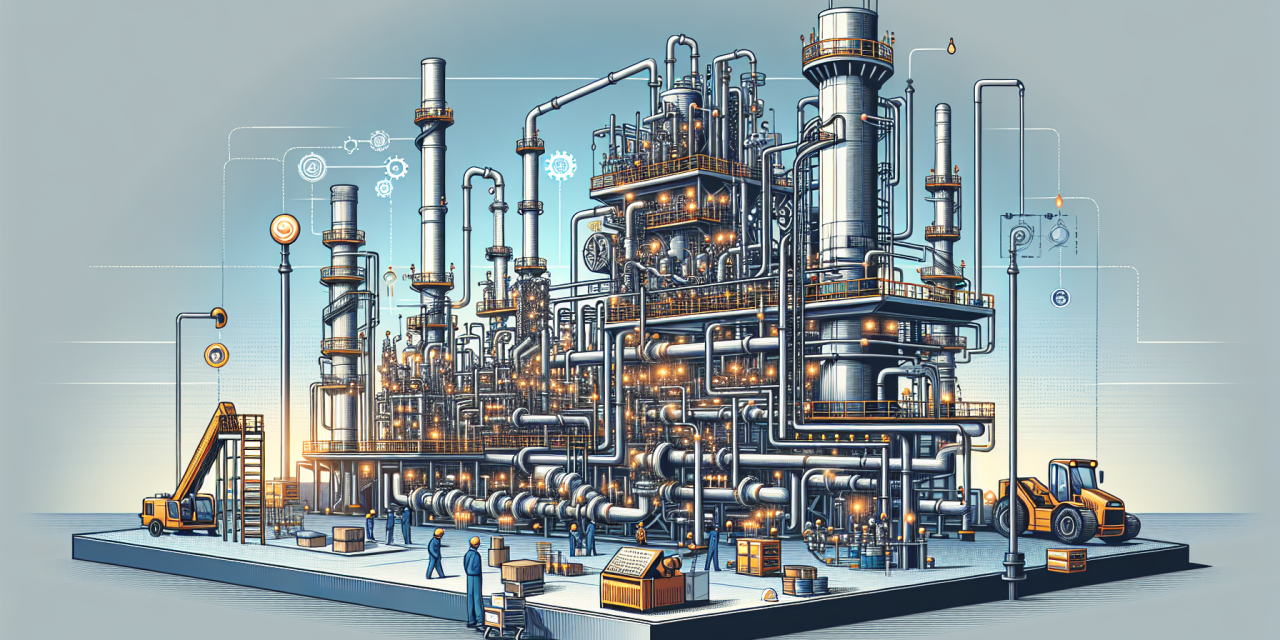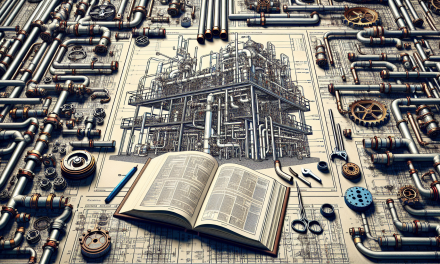Table of Contents
- Introduction
- Importance of Equipment Integrity
- Inspection Techniques
- Evaluation Methods
- Repair Techniques
- Training and Knowledge Transfer
- FAQs
- Conclusion
Introduction
Maintaining the integrity of equipment in process plants is crucial for safe and efficient operations. Equipment like piping systems faces various threats such as corrosion, fatigue, and wear over time. Therefore, performing consistent inspections and evaluations enables companies to identify potential failures before they escalate into significant issues. Additionally, knowing how to repair piping effectively prolongs the equipment’s life and optimizes operational efficiency.
Importance of Equipment Integrity
Whether it’s for safety, compliance, or operational efficiency, prioritizing equipment integrity has far-reaching benefits. Documents from industry leaders reveal that equipment failures not only lead to safety hazards but also incur substantial costs due to unplanned outages. Consequently, process plants must incorporate robust systems for monitoring and maintaining equipment integrity.
Benefits of Equipment Integrity
- Enhanced Safety: Regular inspections help identify potential hazards, significantly reducing the risk of accidents.
- Operational Efficiency: Properly maintained equipment functions better, resulting in less downtime and improved productivity.
- Cost Savings: Early detection of issues reduces repair costs and prevents expensive emergency interventions.
- Regulatory Compliance: Adhering to inspection standards ensures compliance with health and safety regulations.
Inspection Techniques
To achieve superior equipment integrity, regularly scheduled inspections are essential. Different inspection techniques exist, each offering unique benefits and insights into equipment condition.
Visual Inspection
Visual inspection serves as the first line of defense in assessing equipment integrity. By examining pipes and structures visually, operators can detect obvious signs of wear, leaks, or corrosion.
During a visual inspection, consider these factors:
- Condition of protective coatings
- Signs of corrosion or scaling
- Physical alignment and support structures
Nondestructive Testing
Nondestructive testing (NDT) encompasses a variety of techniques that allow for thorough inspection without damaging the equipment. Popular NDT methods include:
- Ultrasonic Testing: Utilizes high-frequency sound waves to detect thickness and flaws in materials.
- Radiographic Testing: Employs X-rays to inspect for internal defects.
These methods empower engineers to assess piping systems in detail, allowing for preventive measures before catastrophic failures occur.
Risk-Based Inspection
Risk-based inspection (RBI) shifts the focus from routine inspections to a more strategic approach based on the likelihood and consequence of equipment failures. This technique prioritizes inspections based on risk levels, ultimately enhancing productivity and safety. Implementing RBI requires:
- Identifying potential failures.
- Assessing the consequences of these failures.
- Setting inspection intervals according to risk levels.
Through RBI, plants can allocate resources effectively, ensuring that high-risk areas receive the attention they require.
Evaluation Methods
After inspection, it’s vital to evaluate the condition of the equipment thoroughly. This step determines whether repairs are needed or if replacement is necessary.
Data Analysis
Analyzing historical data and inspection results helps engineers understand trends and identify potential problems. By adopting advanced data analysis techniques, stakeholders can make informed decisions regarding equipment maintenance.
Key aspects to consider include:
- Previous inspection results
- Maintenance history
- Performance metrics
Material Assessment
Understanding the materials used in piping systems is critical for evaluating integrity. Factors such as material properties, environmental conditions, and chemical exposures significantly influence the choice of evaluation method. By assessing material conditions, engineers can predict how well the piping will perform over time, allowing proactive maintenance.
Repair Techniques
When issues are identified, various repair techniques can restore piping integrity. Selecting the appropriate method depends on the specific problem and material involved.
Welding and Fabrication
Welding stands as one of the most common repair techniques. Skilled welders can restore the structural integrity of damaged pipes through techniques such as:
- Forge Welding: Involves hammering parts together at high temperatures.
- TIG and MIG Welding: Provides precise control for thinner materials.
Additionally, auxiliary fabrication techniques help in creating components for repairs, ensuring the equipment works seamlessly post-maintenance.
Protective Coatings
Applying protective coatings helps safeguard piping systems against corrosion and wear. These coatings can extend the lifespan of equipment significantly. Types of coatings include:
- Epoxy Coatings: Provide excellent adhesion and protective properties.
- Polyurethane Coatings: Known for durability and resistance to abrasion.
While choosing a coating, ensure compatibility with the substrate and operational conditions for optimal performance.
Training and Knowledge Transfer
Equipping the workforce with knowledge is fundamental for sustaining equipment integrity. Training programs, such as the Process Plant Equipment Integrity & Inspection Techniques Course, provide essential skills and knowledge required for effective inspection, evaluation, and repair of piping systems. Regular training ensures that personnel stay updated on the latest inspection methodologies and repair techniques.
If you want to delve deeper into process technology, consider exploring resources like Unlocking the Fundamentals of Process Technology to further enhance your knowledge.
FAQs
What are the common inspection techniques for piping systems?
Common techniques include visual inspection, nondestructive testing methods such as ultrasonic and radiographic testing, and risk-based inspection for prioritizing maintenance based on risk levels.
Why is material assessment important?
Material assessment is crucial because it helps predict how well the piping will perform over time, allowing for proactive maintenance that can prevent failures.
What are the advantages of protective coatings?
Protective coatings help extend the lifespan of equipment by providing protection against corrosion and wear, ultimately improving operational efficiency and reducing replacement costs.
Conclusion
Maintaining process plant equipment integrity, especially regarding piping systems, requires a systematic approach to inspection, evaluation, and repair. By implementing effective practices, organizations can enhance safety, efficiency, and longevity of their operations. Remember, investing in training and continuous improvement is equally important to adapting to ever-evolving industry standards and technologies. For further knowledge enhancement, check out Unlocking the Secrets of Reinforced Concrete Structural Design, Unlocking Efficiency: Mastering Pipes and Piping Systems Optimization, and Mastering Fluid Flow Control Systems for further insights into optimizing operations and maintaining equipment integrity in your process plant.





